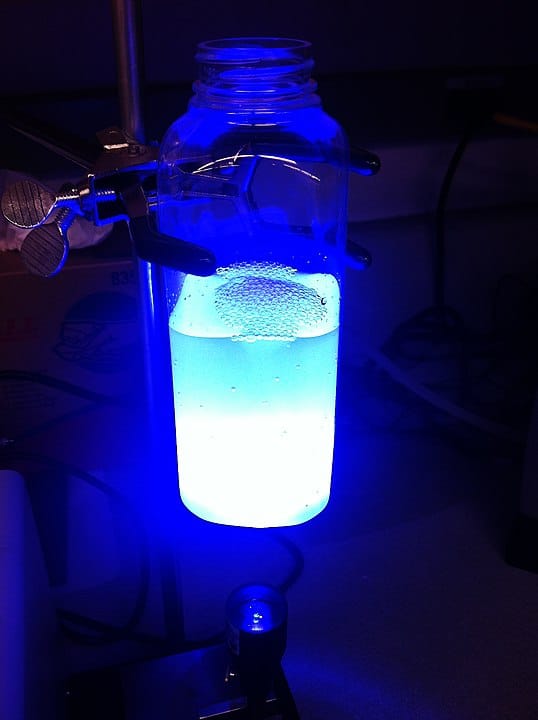
If you enjoy reading this article, why not check out our articles on Everything You Need to Know About Bugs and Pain and How Strong Are Ants Compared to Humans?
Probably we’ve all noticed that insects often tend to like light. But have you ever wondered why this is happening? The light attracts almost all types of bugs. But nocturnal insects are especially interested in it, such as moths, tiny flies, beetles. So, why is light attracting insects? Let us find it out.
Which bugs are attracted to light?
Most often, the light attracts nocturnal insects. Scientists call this situation a phototaxis. But there are exceptions. Most bugs have a well-developed reaction to light, and they can tend both to and from a light source. Bees and wasps fly to the shining. The positive phototaxis is characteristic for them.
Why are bugs attracted to light?
At different stages of their life cycle, insects usually react differently to light.
Housefly larvae: Housefly larvae have negative phototaxis and run from the daylight. But adult flies are attracted to it. Some aquatic bugs, such as mayfly nymphs, keep the dorsoventral position of the body (right side up). They are focusing on the light coming from above.
Butterflies: Some bugs focus not only on the light in general but also on specific wavelengths. In most cases, this helps in finding food or a suitable type of foliage for laying eggs. Butterflies in search of food are guided by a sense of color, distinguishing yellow, red, and blue from green. They fly up to the flowers of plants painted in these colors, more often than to green leaves. However, butterflies lay their eggs only on a green surface. That is, on healthy leaves that their larvae feed on under natural conditions.
Water insects: If the light source is not far from the water, then water insects are attracted to it. It can be mayflies, caddisflies, as well as water bugs living in the water. If you put a light source underwater or near its surface, then adults and larvae of water beetles, mosquito larvae, dragonflies and mayflies come to light.
Other Insects: Much less frequently, flightless types of insects come to artificial light sources. Workers of ants, wingless Tiphia females, and flightless ground beetles will come to the lamp.
Fruit flies tend to like light as well, read more about it in our article Everything You Need to Know About Fruit Flies.
Why do moths fly at night?

If moths like light so much, why don’t they live during the day? Why should they fly at night? Each animal has its ecological niche in nature. It is not possible to switch to another one. After all, it is already occupied by competitors better suited for this. But the most crucial thing is that for some, having a nocturnal lifestyle is beneficial.
What are the benefits of nightlife for insects?
The adult stage of development of moths feeds on flowers, simultaneously pollinating them. The connection of some plant species and beetles can be very tough. Often they even evolve together – like a moth and a Madagascar orchid.
How does light affect the insects?
Natural sources of light are the Sun and Moon, which reflects slightly modified sunlight. It is also airglow of the upper atmosphere, noticeable only at night, as well as the stars. The insects fully adapted life to these light sources, the radiation intensity of which changes regularly on the earth’s surface.
A determining factor for the ability of insects to fly is the level of illumination. And it primarily depends on the height of the Sun above the horizon. Bugs usually do not take off if they cannot distinguish surrounding objects, which may be an obstacle on the flight track. The decrease in illumination up to twilight is an almost insurmountable obstacle to the flight of most species of daytime insects.
Night insects, however, can fly even at low levels of lighting due to specific adaptations in the structure of their visual apparatus. The level of illumination is the main factor determining the flight time of insects.
What can be the reaction to the light?
Positive or negative phototaxis depends on the type of insect and its lifestyle. Besides, many factors determine reactions to light. Among them are age and physiological state, temperature, and humidity of the surrounding air, time of day, season, as well as the level of nervous excitation of the insect itself.
What triggers a reaction?
Some species always demonstrate positive phototaxis ( Malacosoma Neustria butterflies). Others are neutral concerning light (skin-eating bugs Anthrenus). Or they can continually show negative phototaxis (many nocturnal black beetles). There is no definite relationship between the reaction to light and the time of activity.
At the same time, nocturnal insect species often prefer to remain either only in the dark or only in the light. But daytime kinds never stay continually in the dark. And cave species are neutral for light.
Why are insects attracted to the artificial light?
The flight of insects to the light is a paradoxical phenomenon. So, a flying insect, seeing a source of artificial light, turns to it. The nearness of a light source often disrupts a beetle’s orientation and coordination.
Representatives of almost all modern insect groups with diverse ecology and lifestyle fly towards light. First of all, it is insects that are active at dusk and night. But sometimes typical daytime species can also fly to light sources. The daytime insects can move at night to artificial light sources for two reasons.
- They previously remained close to the light source since the evening.
- Something disturbed them.
There were experiments on daytime insects that were sleeping – for example, daytime butterflies. Being interrupted by a push, they fly towards the light with night butterflies.
Why are bugs attracted to UV light?

Not every light is equally attractive to insects. Most often, they fly to lamps containing ultraviolet in the spectrum. For example, it can be mercury lights used in street lamps. In general, flying towards the light is not limited only to night time. A large number of small daytime insects fly to the artificial sources of UV radiation in the daytime.
During experiments, scientists placed daytime insects into the room with curtained windows and a UV lamp. Beetles flew to the light in the same way as night insects.
Why do bugs die in ultraviolet lights?
Does artificial light harm insects?
Definitely yes, especially in cities where the level of light pollution is very high. Every year, millions of randomly attracted insects die near artificial light sources in cities. Note that light pollution causes enormous damage not only to insects but also to vertebrates, such as migratory birds, which also use light for orientation.
How insects are attracted to UV light?
An insect blinded by bright light tries to escape from possible danger. Usually, it flies towards the light. The beetle associates it with open space, where insects go in case of danger. Thus, the moth gets to the vicious circle. The closer an insect is to a light source, the more light irritates it. And the beetle tries to fly away from danger and touch a lamp.
However, as shown by the results of a recently published study, some butterfly populations develop behavioral mechanisms that allow them to avoid the harmful effects of artificial light.
The authors collected caterpillars of Yponomeuta Cagnagella of the first age in places without light pollution and in an area with an increased one.
Caterpillars from both sites developed in the laboratory under natural daylight hours. Moths emerging from an area with increased illumination were 30% less attracted by artificial light. Scientists suggest that such a change in behavior enhances the reproductive success of urban moths.
How do you get rid of insects attracted to light?
Insect killing lamp
It lures moths, mosquitoes, and flies with ultraviolet radiation. Scientific studies and experiments have shown that the most attractive is light in the ultraviolet frequency range with a wavelength of 360 nm. Ultraviolet (insecticidal) A-spectrum lamps emit such radiation.
If you want to know more way to get rid of bugs – such as ants – read our article What Ants Don’t Like – Natural Ways to Repel Ants.
How Does It work?
Attracted to the illumination, insects die from an electric shock when they try to go through a specific grid, which is in front of the light source. Insects dead from the discharge drop to a tray at the bottom of the device. Some models have a container with a built-in fan. The wind pulls dead beetles in a box, and it is simple to remove and clean.
Such a remedy does not harm our health and the environment. Although the voltage on the grid is high, the current power is small. Besides, the electric grid has reliable protection from accidental touches of a person or a pet. The security of the device casing allows us to use it indoors and outdoors.
The light of such lamps does not interfere with sleep. They are convenient to use as a night lamp.
Insect repeller
- This device uses repellents – synthetic or natural substances that offend moths, bugs, and other insects.
- The most common type of natural repellent is fumigation.
- The heating element heats the device plate.
- It gives off a smell that repels insects but is harmless to humans.
Conclusion
As you can see, the mechanism of such a simple thing is quite complicated. Why are insects attracted to light? Scientists try to solve the puzzle, but they are still not sure what is the primary cause. But nature and evolution are not fools, and if the beetles do it instinctively, they have a reason for that.
If you enjoyed reading this article, why not check out our articles on Which Bugs Make the Best Pets? The Complete Guide and Do Pet Tarantulas Bite? Yes and No.
Recent Posts
Tiny Black Bugs in Bathroom NO WINGS: What They Are and What to Do!
Finding tiny black bugs in your bathroom can be uncomfortable, to say the least. Especially if they are persistent, or they appear in very large numbers, which they often like to do. When it...
Tiny Black Bugs in Plant Soil - What Are They & What To Do About It
A short horror story: You get a new houseplant. You do your best to take care of it. You’ve ensured that it has the right soil, the right amount of sun, it gets enough water. And then one day, you...

